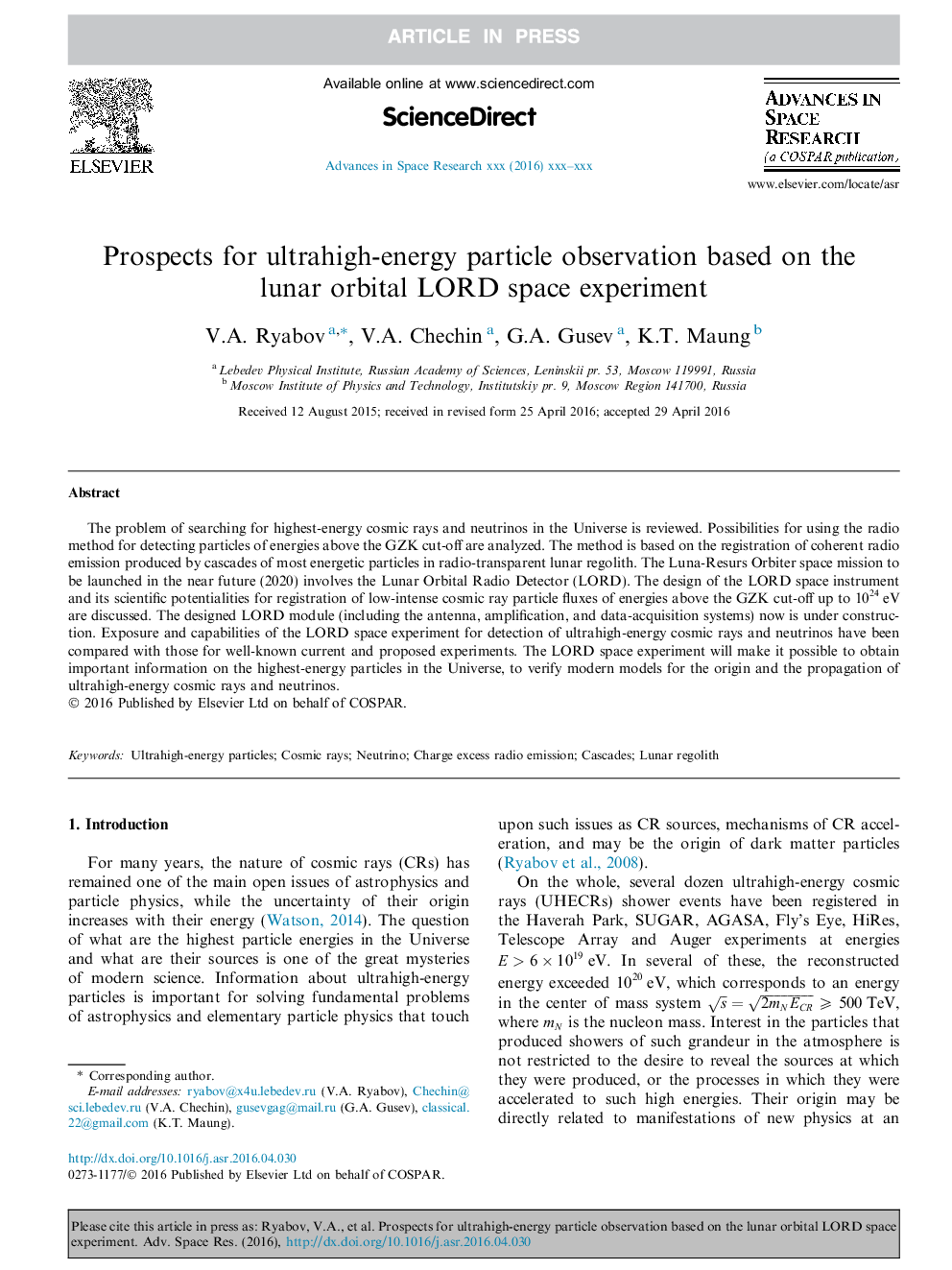| Article ID | Journal | Published Year | Pages | File Type |
|---|---|---|---|---|
| 10694108 | Advances in Space Research | 2016 | 11 Pages |
Abstract
The problem of searching for highest-energy cosmic rays and neutrinos in the Universe is reviewed. Possibilities for using the radio method for detecting particles of energies above the GZK cut-off are analyzed. The method is based on the registration of coherent radio emission produced by cascades of most energetic particles in radio-transparent lunar regolith. The Luna-Resurs Orbiter space mission to be launched in the near future (2020) involves the Lunar Orbital Radio Detector (LORD). The design of the LORD space instrument and its scientific potentialities for registration of low-intense cosmic ray particle fluxes of energies above the GZK cut-off up to 1024eV are discussed. The designed LORD module (including the antenna, amplification, and data-acquisition systems) now is under construction. Exposure and capabilities of the LORD space experiment for detection of ultrahigh-energy cosmic rays and neutrinos have been compared with those for well-known current and proposed experiments. The LORD space experiment will make it possible to obtain important information on the highest-energy particles in the Universe, to verify modern models for the origin and the propagation of ultrahigh-energy cosmic rays and neutrinos.
Related Topics
Physical Sciences and Engineering
Earth and Planetary Sciences
Space and Planetary Science
Authors
V.A. Ryabov, V.A. Chechin, G.A. Gusev, K.T. Maung,
